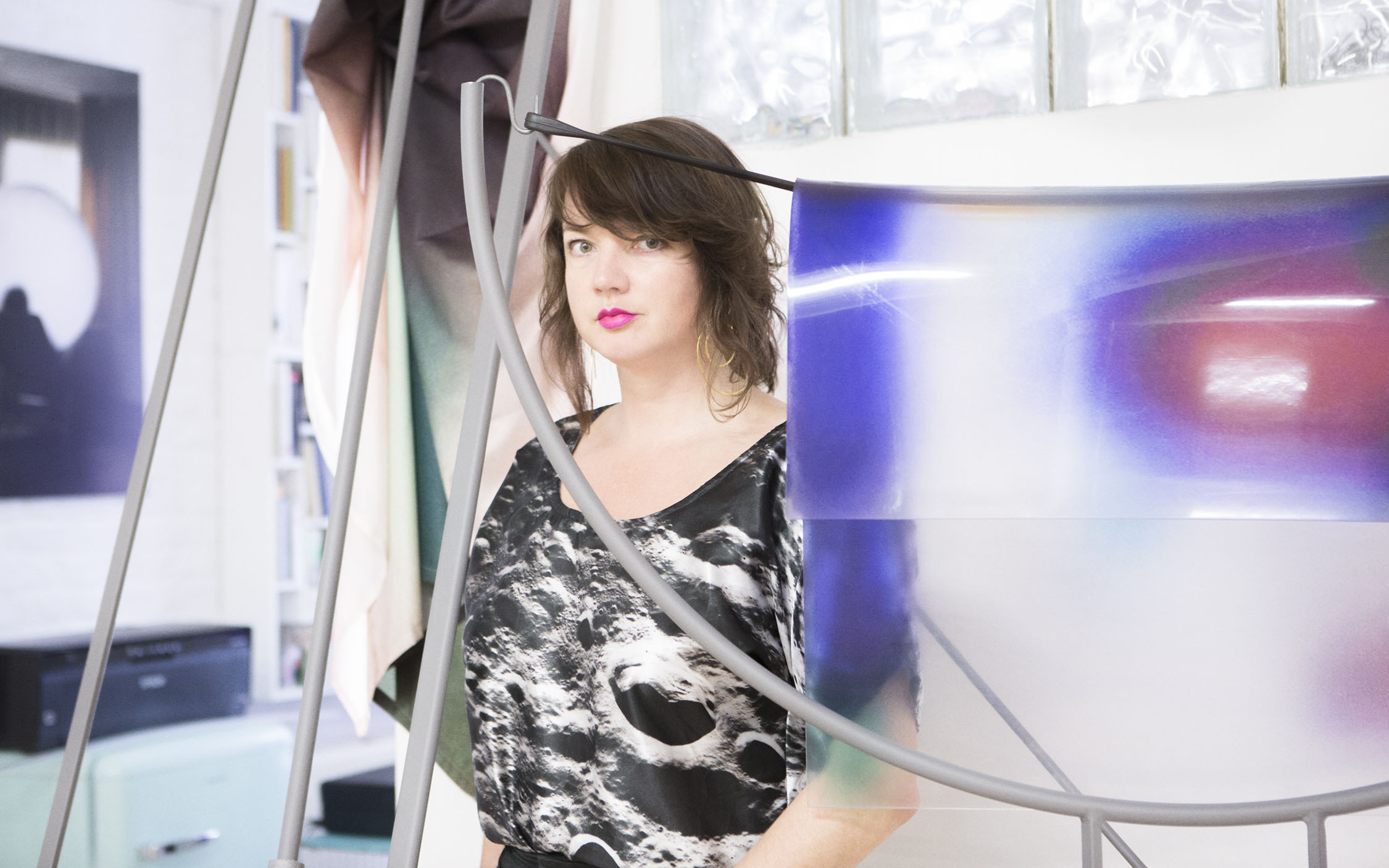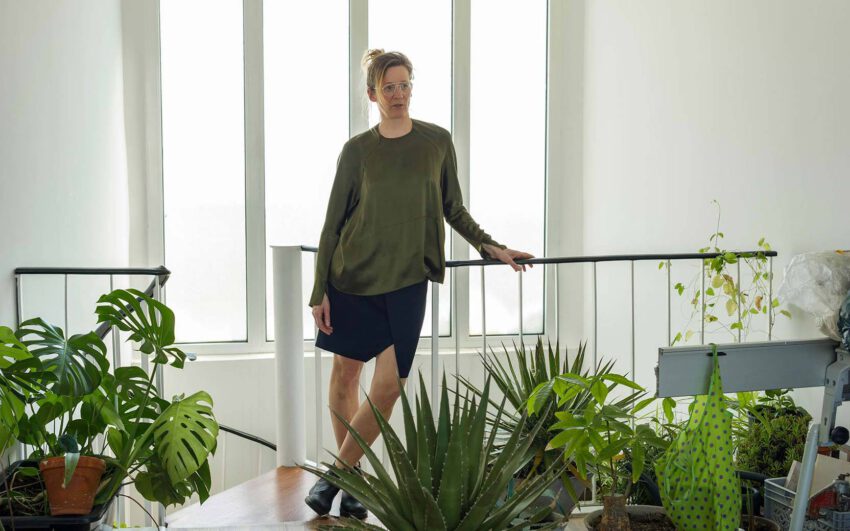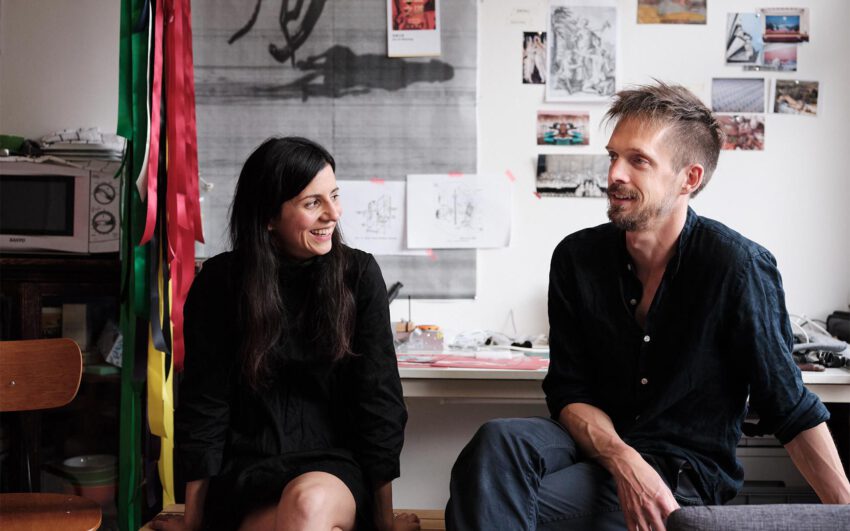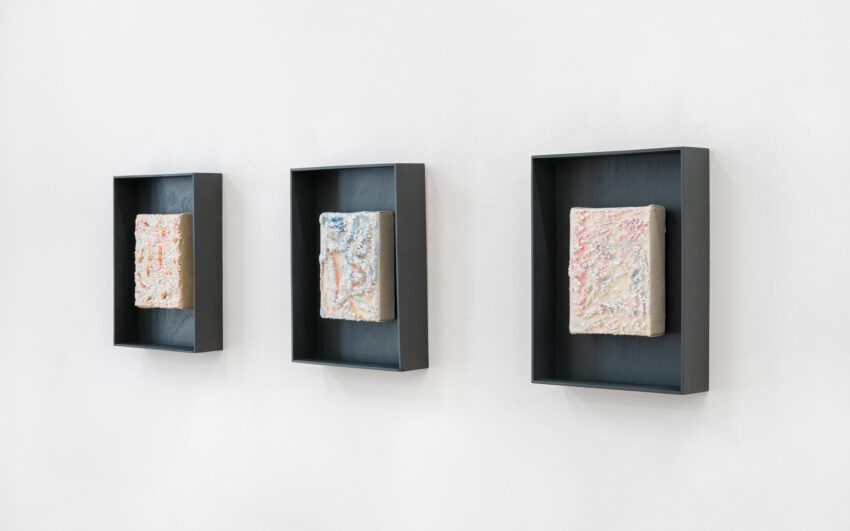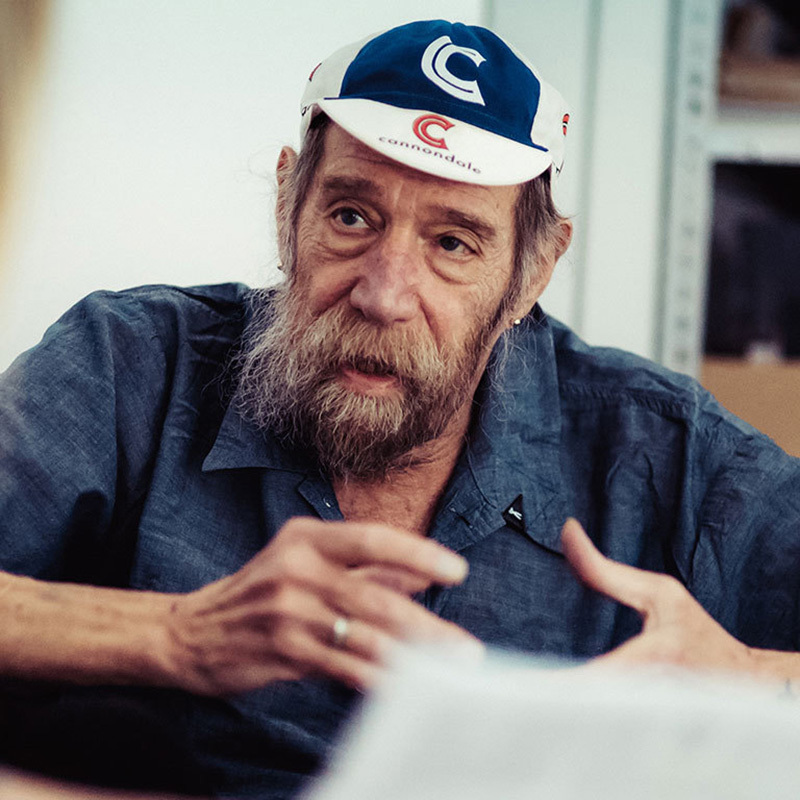After living in various cities and countries around the world, and having been nomadic for the past couple of years, Dutch visual artist Anouk Kruithof has now settled in Brussels. Using photography as the foundation of a practice that is at once spatial, social, and research-based, she takes her inspiration from the unfathomable – be it in the dark and dangerous convolutions of jungle rivers or Instagram posts of western companies.
You recently settled in Brussels, and have previously spent extensive working periods in Rotterdam, Berlin, New York, Mexico, and Suriname, while going back and forth between these destinations and your native Dordrecht in the Netherlands, how does it feel to have the stability of your own studio again?
It’s great to have a place of my own, with all my books, belongings, works, and materials – for the past couple of years I’ve been a nomad, but if I think of ‘my studio’, this physical, walled place isn’t my concept of a studio. It limits me… I’ve spent quite some time in the jungles of Suriname recently (a country on the northeastern Atlantic coast of South America) and there I work outside, in the forest, at the river – for me, that’s a studio as well.
What work did you do in Surinam?
I’ve started an art project, but mainly I’ve been building my own house there, in a Saramakan village called Botopasi on the upper Surinam river. The South American jungle is amongst the most barely comprehensible phenomena in my experience. The transformative nature of the Amazon rainforest is primordial, all encompassing, unimaginably powerful, terrifying, beautiful, and spiritual. The profundity of its innate wisdom informs the wisdom of its people, despite the absence of a historiographical tradition. However, the Digicel-antenna (Digicel is one of Suriname’s two telecompanies) is the pride of the village. People’s ways of life still closely resemble those of the era when they were runaway slaves that settled in the jungle along the Suriname river, more than three hundred years ago… But now people are on WhatsApp. I gave a creative workshop with the kids of the village school and I designed the welcome sign of the village – not simply as an art project, but out of a sense of gratitude to them for welcoming me into their community.
At the same time, the western approach of mankind fascinates me. Our relationship with technology, which seems to actively intervene between the human body and brain is equally incomprehensible to me. I have started to mix the two, together with people, nature, and water, by taking images of future narratives which you see over there, printed on transparent materials such as organic silk, various fabrics, and PVC plastics. But for now, this is a project still ‘on the hard drive’.
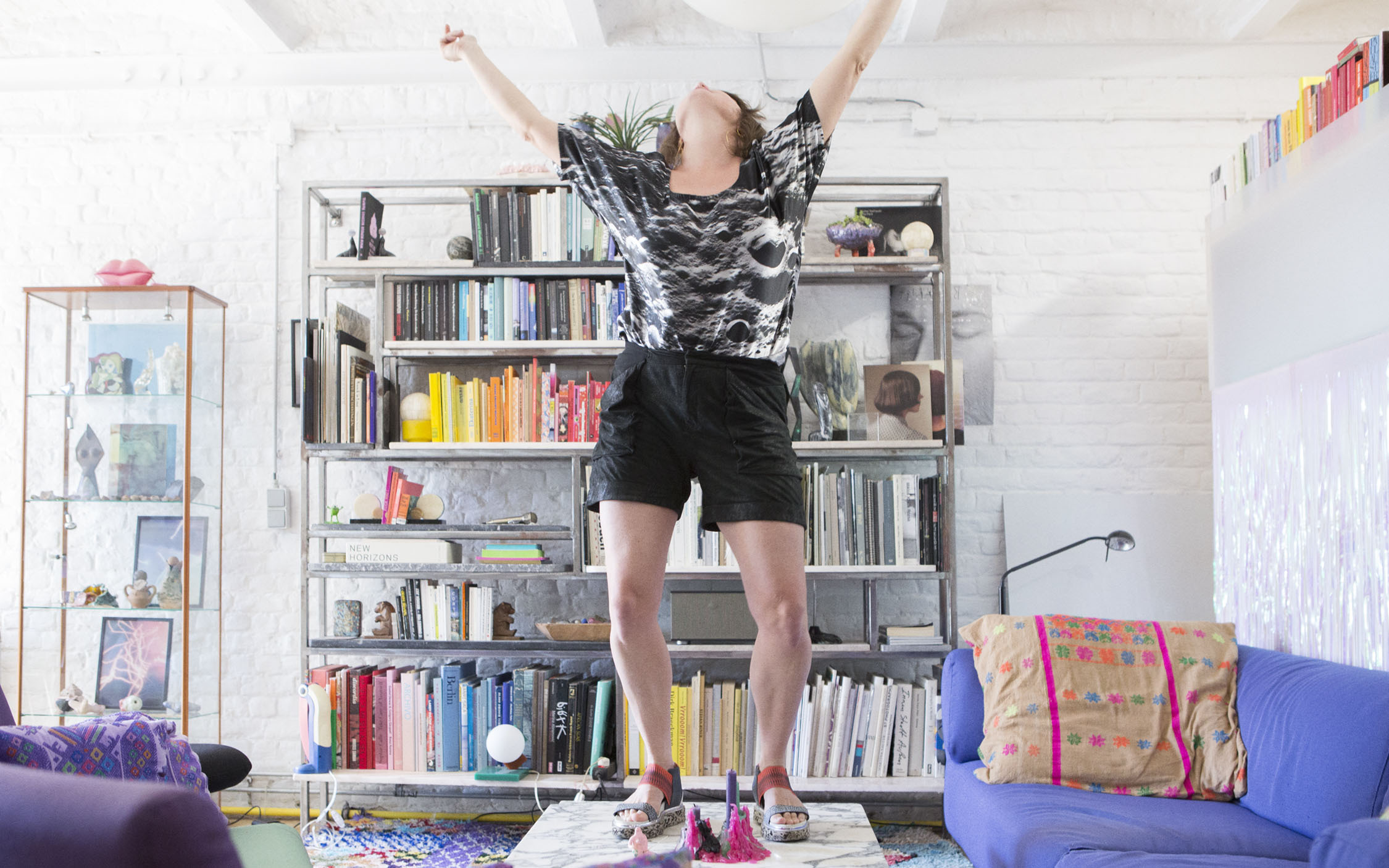
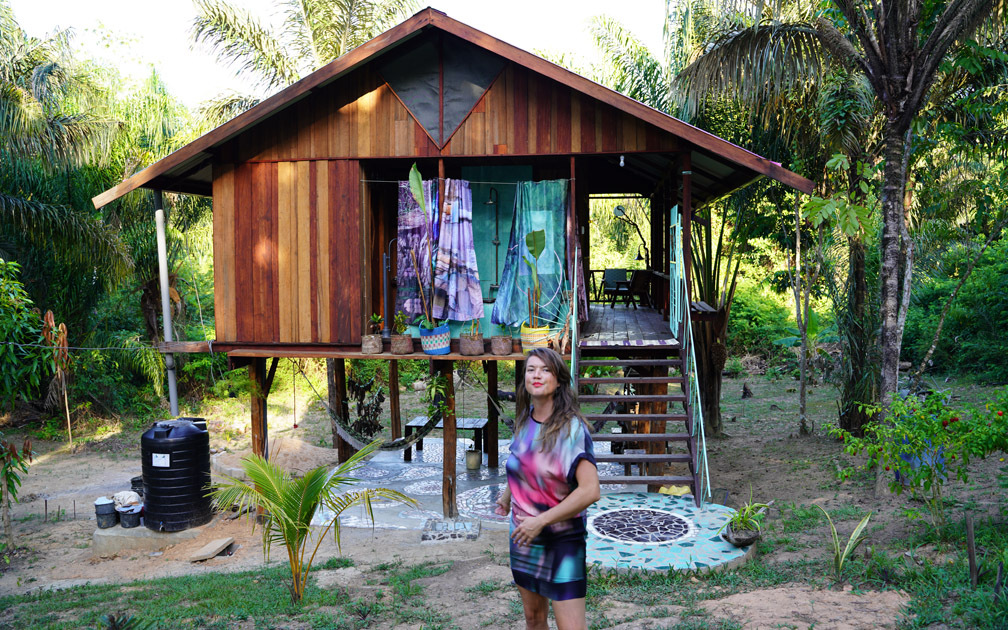
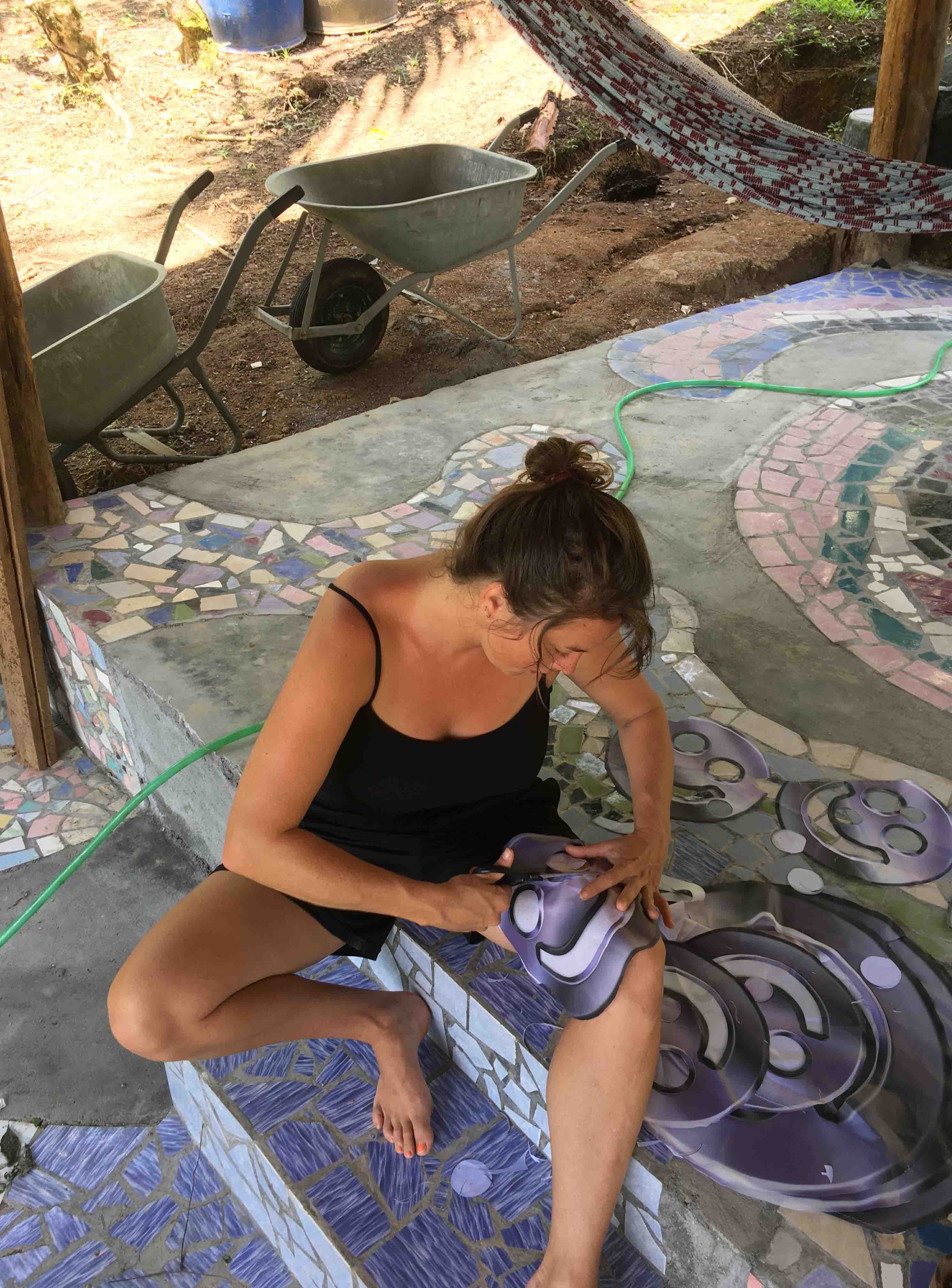
What role does your studio play in this?
It is the calm and undisturbed space that I need to focus on all the material that I’ve gathered – from out there, the Internet, or books. For many projects, one needs a safe space to concentrate, reflect, and realize artistic production into final works. Now that I have a studio again, I can assess and better process out of all the material and ideas and inspiration that I’ve gathered slowly into final works of art, a few solo shows, and some books. It’s very important to me to also have this closed personal space as I always keep my antennae wide open to the world. But I’ll never be a formal studio-based artist – it would feel like being in jail. What happens outside the building, that’s where I want to engage. I don’t have that kind of introspective ‘me and my mind’s, craft’s, and materials’ practice. The contrast between an outside world of unknown things and a focused inside space to create final works of art is my balanced way of working.
Yet you described your practice as solitary?
Yes, because I rarely collaborate to any degree with other artists, except in such intellectual discourse like discussing each other’s ideas. Artistic connections always happen in a certain context where they grow organically, or for a reason. I exist in an introverted state for quite long periods, so the corona virus lockdown has been somewhat natural to me. Yet, generally I’m very interested in connecting with people. When for example, my project involves interviewing people on the street, I am happy for this reason to go out and work within this social context, because it’s outside where the real curiosities of human existence lie.
Can you give an example of that?
In 2011 I did a residency Het Vijfde Seizoen (The Fifth Season) in the Netherlands within a huge institution for psychiatric patients with quite diverse disorders. I asked ten patients who were inmates there what their ideal birthday celebration would be, because I found it interesting to give them a really memorable day – and started organizing these birthdays in dialog with them. One wanted to have a big party for all the elderly with a live singer and herring toast and orange juice for all the guests – an interesting gastronomic combination. One wanted to go into town and smoke a birthday joint. That one ended up stalking me. Each of them also got a birthday cake with their photographed portrait on top – putting one’s own face on a cake was fun and they had something to share with the other patients and family. I produced the publication Happy Birthday To You out of this project, featuring quotes of the interviews and photographs of small spatial installations that I created out of the documentary photographs taken by my intern during the birthday celebrations. It was a great experiment of honest human collaboration.
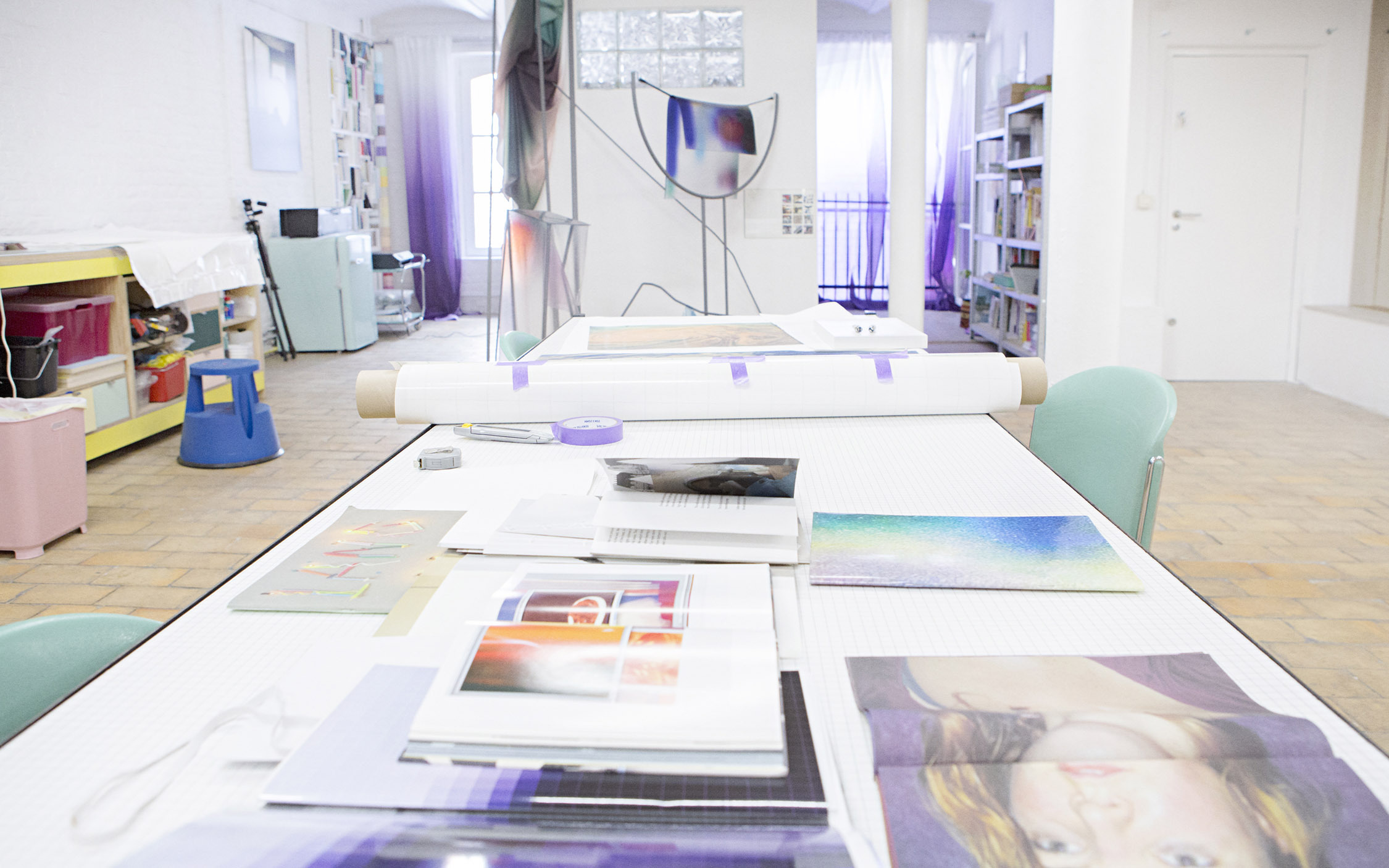
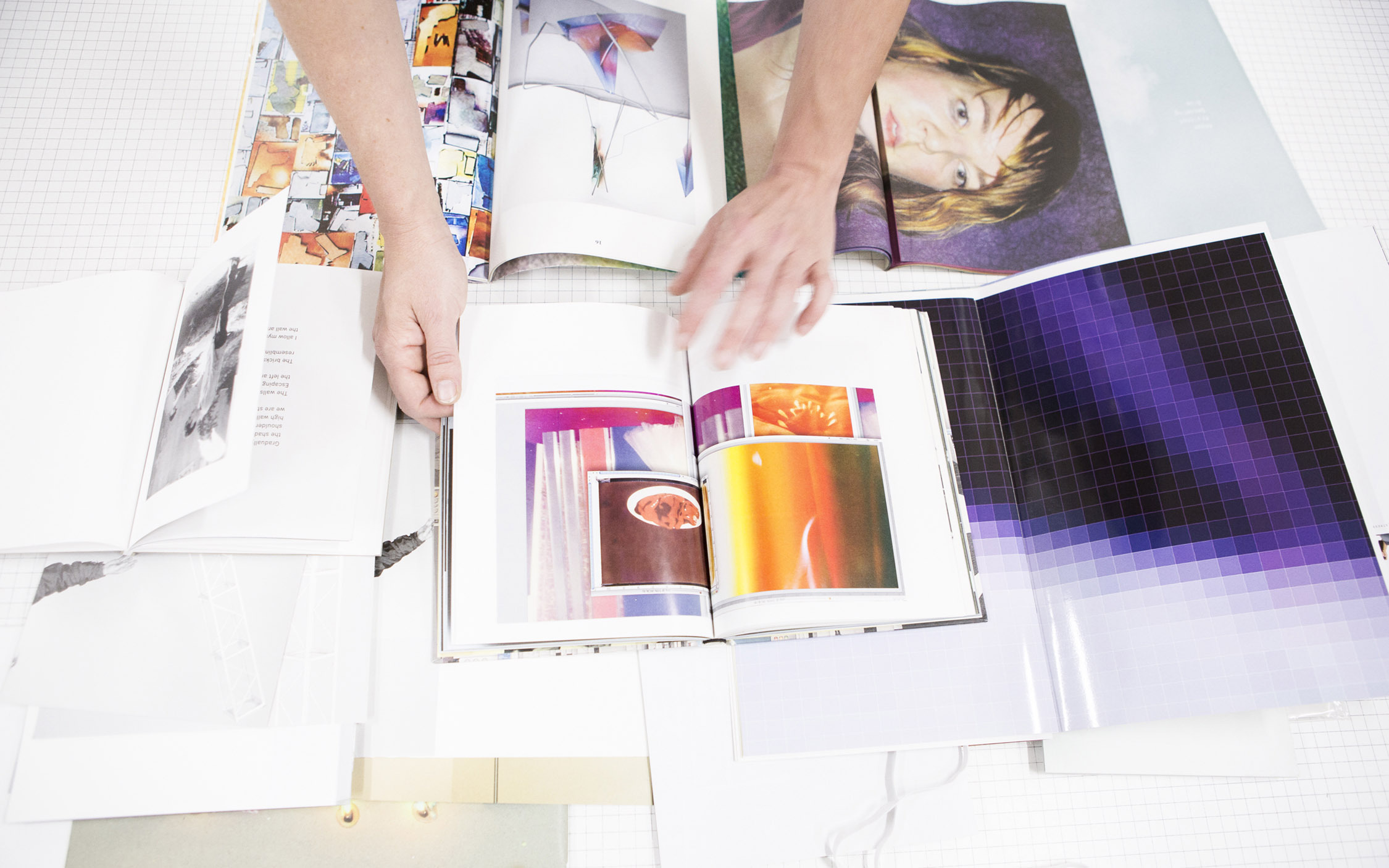
What turns you on?
So many things that I can’t fully comprehend! The concealed perils of the jungle and river we spoke of before. My curiosity of the unknown causes me to always be seeking more information; learning enriches me. I want to trigger my rational ‘not understanding’, listen to others, read and research to learn and flow, so my mind and perception are continuously challenged and kept in motion. I am fascinated with burning topics or actualities, such as the environmental crisis, which I can hardly comprehend in all its depth and potentially grave consequences. All of this is what prompts me to dig deeper, and also of course because these topics constitute the pressing issues concerning life on our planet and the future of mankind. Issues of such immediacy that concern us all such as the melting icecaps is I think a good starting point to make work, but it is also easy to get into difficulties as it becomes over-generalized due to the immensity of the topic… In order to make good art I feel the key is to find a personal approach with which to deal with such hugely important matters; at the same time, I am not interested in making dry conceptual work. My video installation Ice Cry Baby is probably a good example of this.
For Ice Cry Baby you used videos that you found online. Could you describe the work?
It’s a collage of videos that I ripped from the Internet, all of them made by people who take trips to watch collapsing ice caps. It is a natural disaster that is capitalized upon to such an extent that it has become a tourist attraction. People can be heard applauding and screaming with excitement. At a certain moment you hear someone shouting ‘Yeah Baby’ at a collapse – which is partly where the title is derived from. It is as if these tourists own these collapsing icecaps… It has become an absurd and perverse kind of entertainment.
It’s like the 21st - century equivalent of the sublime. In romanticism, experiences that were extremely impressive and at the same time experienced as incredibly beautiful, were referred to as ‘sublime’. We are talking about frequently dangerous and violent natural phenomena.
Yes it’s exactly that. And the online sharing and circulating of these ‘natural disaster spectacle videos’ is very uncritical. Ice Cry Baby on the other hand contains other more poetic layers. The ice breaking and collapsing into the water is very poetic, as though earth is already crying. For me, it is clear that Mother Earth, within whose bosom we are invited to live, is saying: it is enough! A clear alarm! I hope the effect is confusing and huge: in fact we are all responsible. At the same time, this work was created in my super emotional and disastrous break-up year, perhaps some underlying personal compulsion towards these “earth-crying” videos as well…
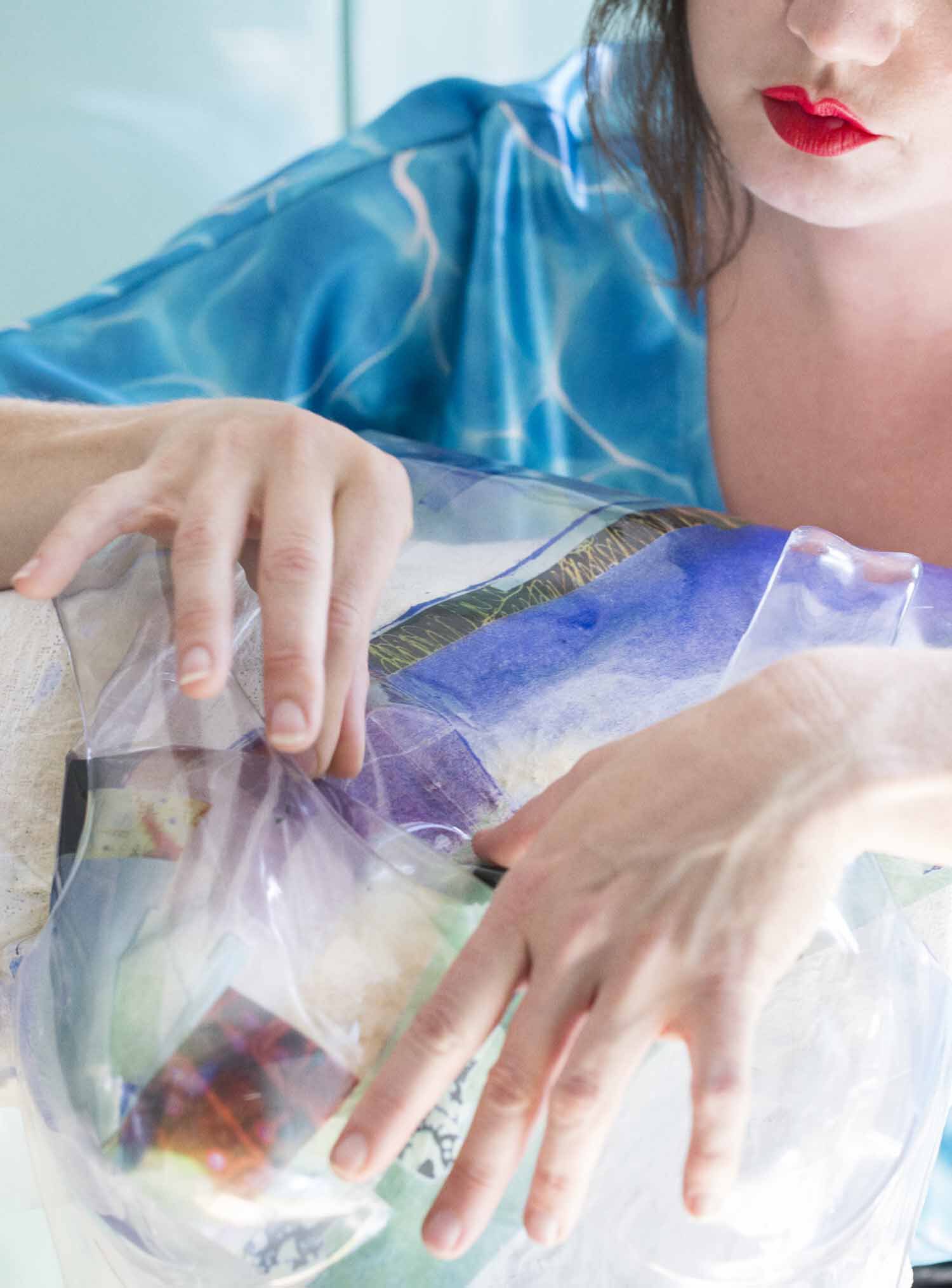
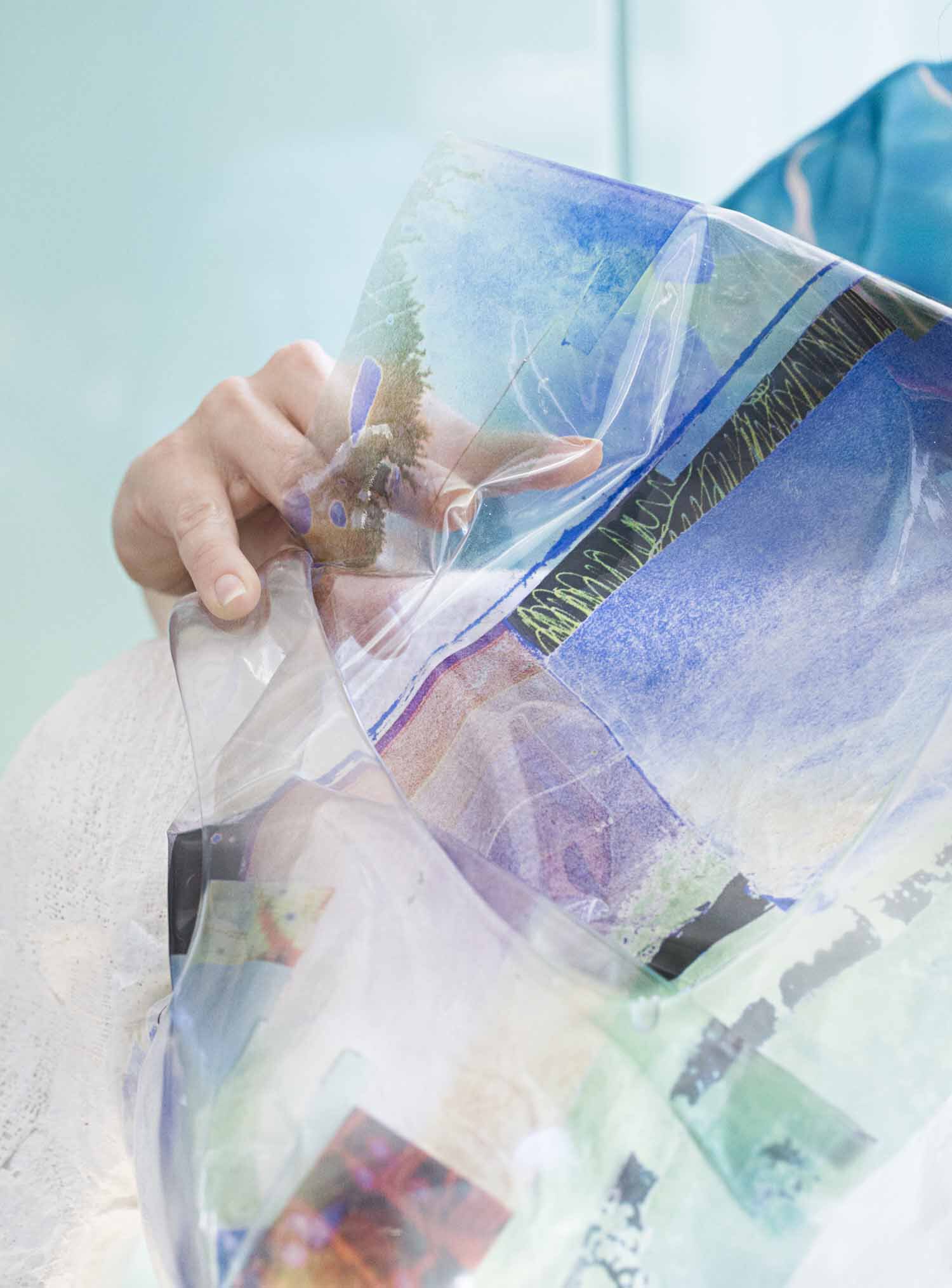
Water seems to be a topic that is often recurring in your work. Would you agree?
Yes, I would even say it is the connecting element of my work and reflected in the working title of my new book Be Like Water. It is a metaphor for both life and working. I am a very flexible and open person and I have a transformative approach to everything. Water can have liquid, solid, and gas states, it always finds its way, it makes the changes. And change, to me, is the only constant in life.
Both can be important reasons for you to be interested in what exactly you’re doing: there’s what inspires you and drives you, while at the same time you can be very interested in demonstrating the manipulations that companies enact in the images they share in their social media channels.
My project #EVIDENCE (2015) is perhaps a good example of this, which also touches back upon the elusive essence of certain phenomena that we have discussed before. #EVIDENCE goes back to Evidence (1977), the ground-breaking publication by Larry Sultan and Mike Mandel that marked an important moment in the appropriation movement in photography. It features photographs from the archives of big companies, governmental organizations, and educational institutions that somehow helped define America’s future, placed throughout the book without their original context.
Two years after I had moved to New York City in 2012, I wondered what America’s ambiguous future would look like at that point. I worked with the American researcher Doug Emery and together we identified certain educational institutions, government agencies, and companies that will play a role in determining the future of the United States. We selected 43 and took a close look at their Instagram accounts, retracing their activity to their very first posts and studying their descriptions. Based on 650 screenshots I started to make various works. Quite questionable things came out, and quite critical works resulted from it, such as Green Is More Than Just a Color, which is based on a customer relations campaign by Waste Management Inc. featuring employees holding handwritten signs with environmentally concerned hopes and ideals for the future. The Instagram account of the Transport Security Agency (TSA) features photographs of confiscated weapons, including the (blurred) identity cards of their former owners. Both Neutrals and Concealed Matter(s) describe different families of sculptural works that deal with privacy and violence based on these photographs.
You have a multidisciplinary approach. Are you working towards a layered experience in your installations?
Yes, for instance when it’s exhibited, I would like to have the aforementioned video Ice Cry Baby surrounded by works from a ‘family of sculptures’ (Snug-Fit, Folly, Flat-Head, Skimmer, Stonewall and Squabble) as a kind of messy audience. They are not one work together, but the subject matter is related: the sculptures are anthropomorphic shapes sculpted out of found Styrofoam theater props that I combined with appendixes such as walking sticks and protheses, then fiber-glassed and painted. Above and under them are loosely placed dangling ‘skins’, comprised of photos printed on latex, rubber, and plastic. The photographs depict water surfaces polluted with oil, toxic waste, and other chemical substances: These are aerial stock photos I bought which fascinate me because the pollution is of course immediately dispersed by the water movement, that means, the evidence of the criminal toxic ‘destructive dumps’ done by humans is ultimately deleted by nature. Due only to the technological applications of aerial photography and the internet are we able to capture and expose this. Since they materialize in my work on semi-transparent plastics, which are made primarily from oil, there is a duality occurring that I believe is raising questions. The carrier reinforces the image and becomes part of the message.
Looking back on your artistic practice to date, what was a key moment in your work?
Leaving the Netherlands for Künstlerhaus Bethanien in Berlin when I was 25. The other artists were way more advanced in their art as well as in their careers, so I learned a lot. Professionally and personally – I stayed in Berlin for four or five years. One can discover in the work that I created back then that I was able to liberate myself from the kind of straight photography that I learned during my education. I came to work towards what’s more mine. I developed sculptural and installation modes of photography, stepping out of the medium and its conventions towards an approach of spatiality. I always question everything, including what I am doing myself, while daring to fail. So I had to bounce off a lot of walls.
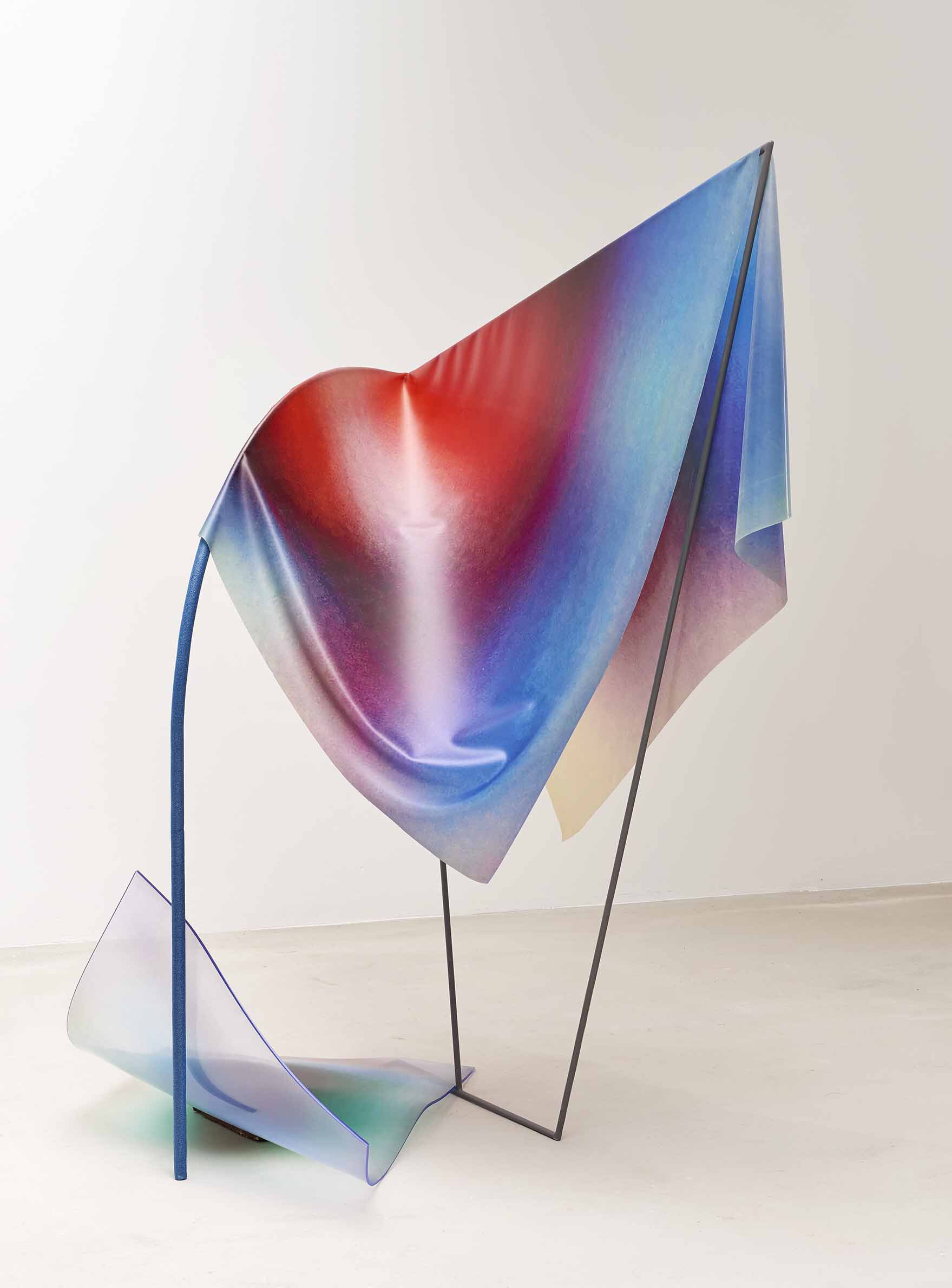
Neutral (confident), sculpture 2015, 105 x 46 x 80 cm, graphite grey metal construction with pipe-isolation and 98 x 16 cm flatbed print on latex and 55 x 87 cm flatbed print on vinyl
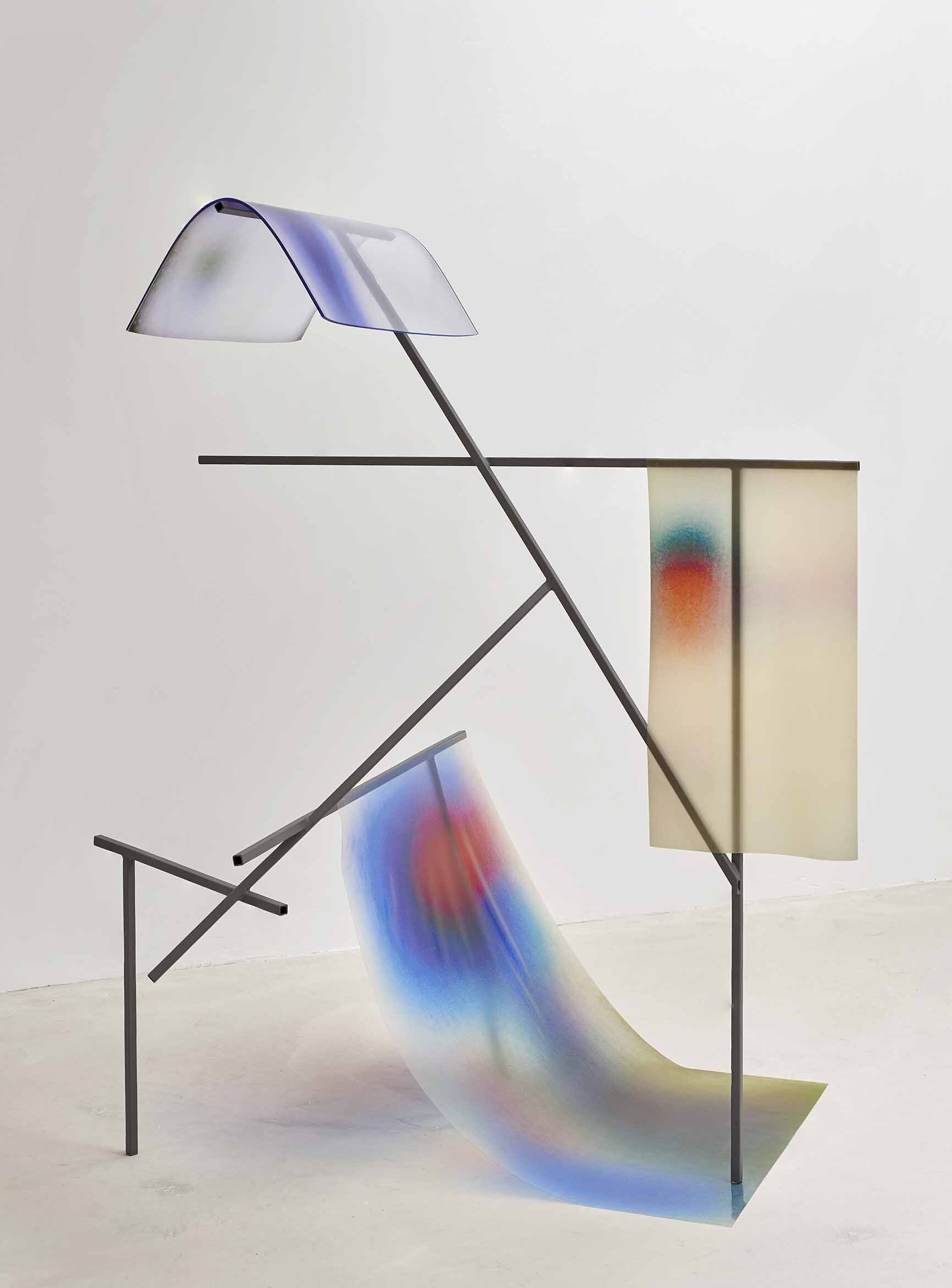
Neutral (puzzled), sculpture, 2015, 154 x 120 x 110 cm graphite grey metal construction and flatbed print on latex, thin plastic and vinyl
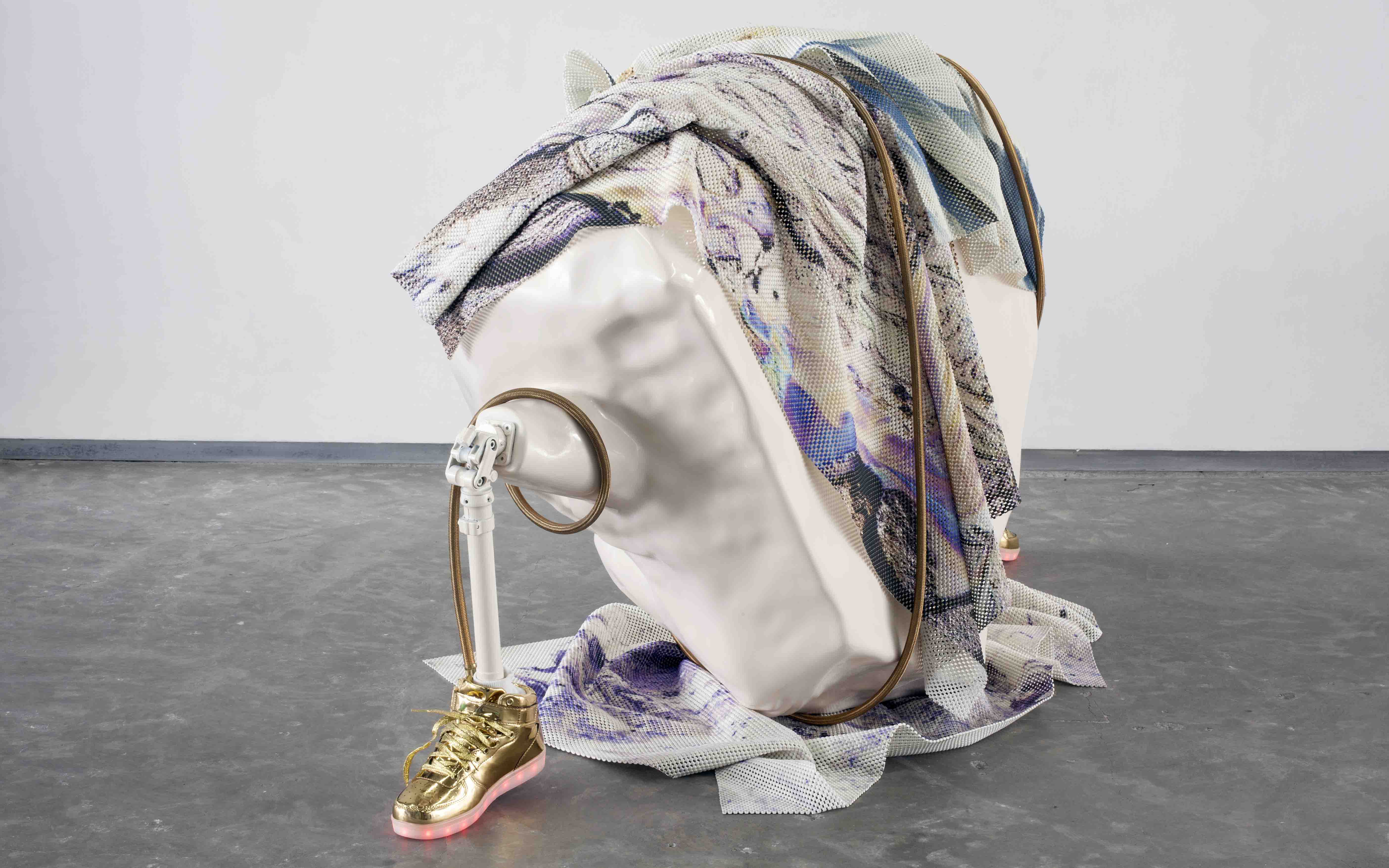
FOLLY, Sculpture, 2017, 93 x 160 x 55 cm, Inkjet prints on anti-slip mats (rubber), fiberglass, paint, metal, led-shoes, gas-cable
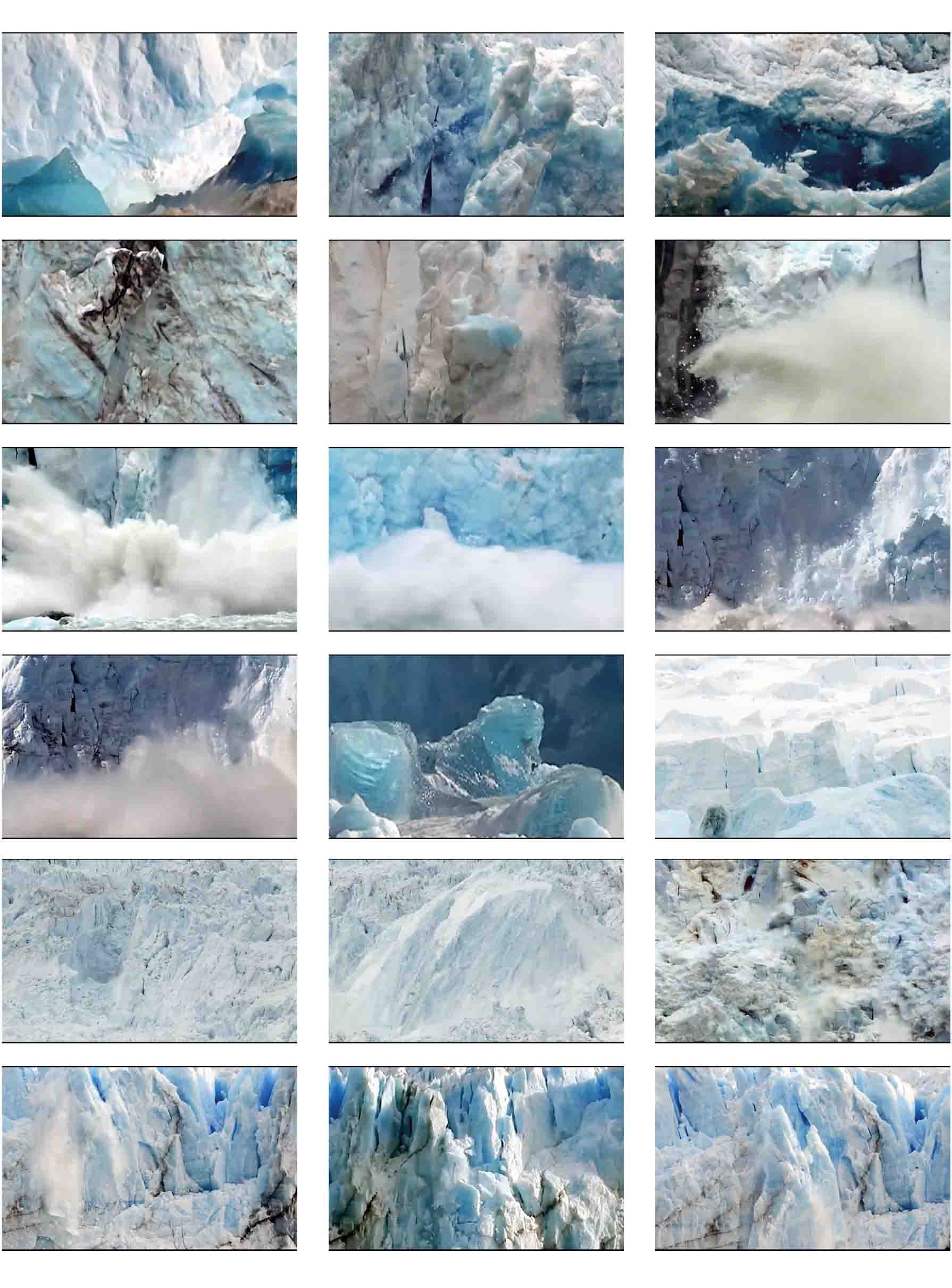
Ice Cry Baby, 2017, (video 3:00 min / video repeated 8 x till 24 min total with sound )
Interview: Jesse van Winden
Photos: Laetitia Bica
Links: Anouk Kruithof's websiteGallery Valeria Cetraro Casemore Kirkeby


